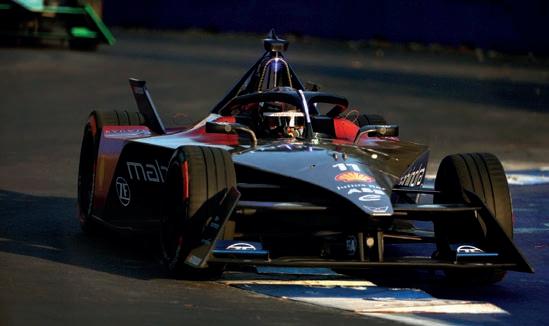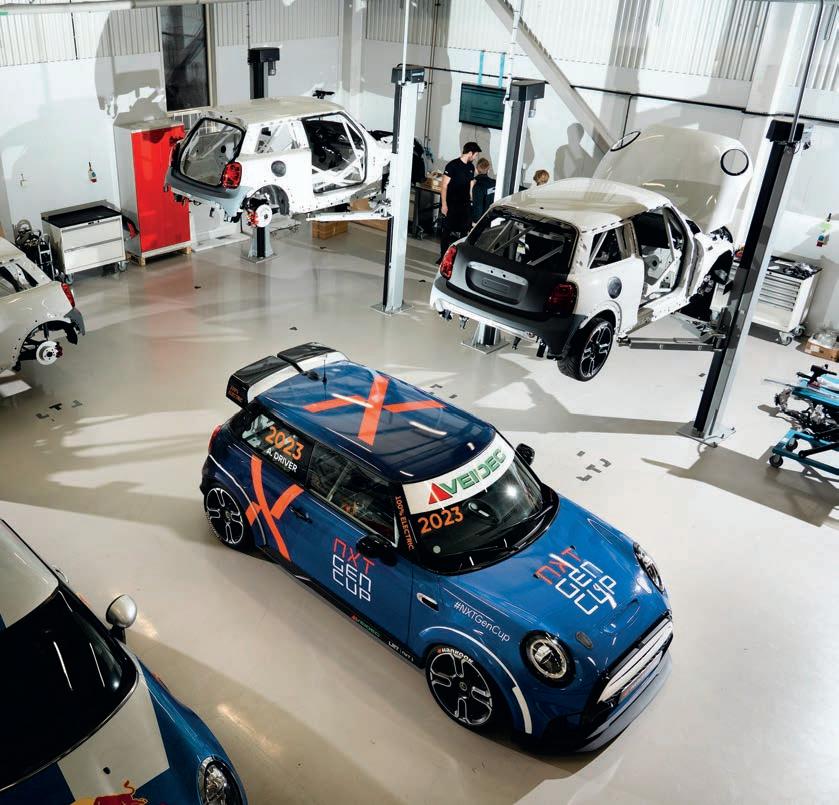
4 minute read
A quantum leap for developing high-performance racecars
Harnessing the disruptive power of quantum computing
Quantum computing could enable efficient simulation for racecar innovation by overcoming the computational bottle neck. Unlike the traditional computer, established on bits and bytes, quantum computing (QC) uses super-positioning and entanglement –theoretical concepts of quantum mechanics – to process information. This property allows quantum computers to perform calculations that are impractical, or even impossible, for classical computers.
QC can also account for uncertainty in its calculations, something unthinkable for a binary machine. In-house quantum computing technology infrastructure has challenges, such as circuit depth, qubit count, and noise interference. Additionally, it requires significant investment in hardware and is cost prohibitive for most firms.
Enter software venture, BosonQ Psi (BQP), which has developed a proprietary hybrid quantum-classical cloud simulation algorithm software called BQPhy®. BQPhy leverages the power of quantum computing to perform simulations utilising a hybrid infrastructure of quantum computers and classical highperformance computers to highlight nearterm quantum value to simulation challenges.
The software-as-a-service enterprise uses quantum-inspired algorithms to speed up virtual simulations in a proprietary multiphysics and computer-aided engineering (CAE) suite equipped with a high-accuracy solver, making BQPhy the world’s first quantum-powered simulation suite.

BQPhy finds use in advanced analysis of ways to perform simulations for future innovations faster and more efficiently while from

BQPhy finds use in advanced analysis of materials, structures, thermal phenomena and design optimisation. It explores new ways to perform simulations for future fault-tolerant quantum computers, giving it the potential to usher next-level design innovations faster and more efficiently while requiring fewer computational resources.
With motorsport being an engineering competition as much as a racing contest, engineering teams rely more heavily on simulations from CFD to digital twins and race simulators than ever before to gain a competitive edge. While multiphysics simulations help create optimised designs, engineering teams are constrained by the help engineering teams are constrained by the scalability of computational power provided by HPCs to enable complex simulations.





They often have to trade off between simulation accuracy and the time required, given the computational bottleneck that is not easily scalable. With its exponential processing power, BQPhy could enable incredibly efficient and more complex simulations with the same computational resources reducing simulation time and costs, prototyping, testing schedules and production costs.

BQP’s breakthrough approach

The Q-SAAS venture BQP recently released its alpha version of BQPhy with its proprietary quantum-inspired algorithms integrated as part of a CAE solver, leveraging the power of quantum computing and can run on both HPC and quantum computers.


Design optimisation with this computation technique is a digitalised approach to automatically finding optimal solutions to physics problems while satisfying constraints. The solutions found using the BQPhy methodology evolved through processes modelled after the elements of Darwinian evolution.
Evolutionary computation algorithms are extensively used in complex and continuous optimisation problems. Like traditional evolutionary methods, several candidates are created, and solvers run through the potential options arriving ever closer to optimal with every investigation.
BQPhy’s quantum-inspired technology is encoded into the quantum register and converted into binary data to generate a broader candidate pool. The quantum parameters are then altered automatically from previous run data to create new candidates until the optimised criteria are met.
During the development of BQPhy’s technology, the Rosenbrock Function (a non-convex function, introduced by Howard H Rosenbrock, used as a performance test problem for optimisation algorithms) and Holder Table functions (optimisation problem with multiple local minima, but it has four global minima) were used as test functions to evaluate the algorithm’s performance against classical approaches to find global minima in a complex search space.
BQPhy’s state-of-the-art quantum solvers integrated with industry leaders in quantum hardware provides a full stack experience to the user
The world’s first quantum-powered simulation suite
Eight times less computational resources was required for optimising the weight of this component using BQP solution compared to traditional computing technology
Comparing BQPhy’s technology with gradient-based and stochastic approaches, it converges faster with fewer solutions generated. This indicates fewer computational resources to obtain the optimal solution.
BQPhy key features
BQPhy’s shape optimisation solver enables multivariable optimisation with a large number of constraints. With shape optimisation, engineering teams can optimise the overall vehicle shape, aerofoils, spoilers and other racecar features.


Aerofoil shape optimisation: multi-variable optimisation, indicated in orange, delivers 18 per cent better results with a 40 per cent cost saving compared to traditional methods. The aerofoil in blue is already highly developed for high downforce to drag ratio, but the BQphy QIEO algorithm improves it further, increasing aerodynamic performance by nearly 11
BQhy QIO evolutionary offers a higher exploration rate, implying a larger solution space, and helps evaluate more rigorous constraints. This is like exploring the forest with a headlamp (the classical approach) compared to with night vision, which offers a broader view (QIO evolutionary) algorithm. As can be seen from the results, BQPhy-QIEO algorithmic approach enables efficient simulation

Topology optimisation based on structural and mechanical principles, which can optimise material type and distribution for a given set of boundary conditions and design constraints, is also part of the BQPhy simulation suite. This allows the reduction in ‘unwanted materials’ to maximise the component or system performance.
BQPhy’s simulation suite also features quantum-based structural and thermal simulation solvers. With this, engineering teams can push the envelope to build innovative safety features, advanced braking systems, and efficient heat dissipation systems, among other cutting-edge features, to outperform the competition.
Additionally, engineers can train quantum machine learning algorithms on data from classical thermal analysis simulations to predict materials and systems’ thermodynamic properties based on their mechanical structure. These simulations are vital to determine ambient fuel temperature, energy transfer efficiency and tyre wear based on driving conditions.

It can help the engineering team by proposing acceleration points out of corners, deployment onto straights and even precise pit stop windows based on the thermal analysis, giving the teams that vital split-second advantage. Technological breakthroughs and rapid development of the quantum ecosystems signal an exciting time for motor racing innovations.
The added advantage: Strangeworks hardware ecosystem
BQP is partnering with Strangeworks, an advanced computing company to gain access to quantum and classical hardware providers. BQP’s simulation suite will integrate the Strangeworks platform, enabling engineering teams to access a robust quantum hardware ecosystem from within the BQphy software.
In addition to providing cloud access to hardware resources, Strangeworks is building a growing catalogue of applications and services on which the BQPhy software is currently listed. Strangeworks’ is focused on creating easy-to-use solutions that securely integrate with existing workflows. They put the power of choice in the hands of the customers, enabling users to scale their spending and solutions at a pace that matches business needs.
The BQP and Strangeworks partnership means customers can run simulations across multiple backends and start bringing novel solutions to motorsports quickly and efficiently. In conclusion, the quantum revolution is imminent, with several established technology providers and many more start-up companies entering this space in recent years.
Engineering teams looking for a proof of concept to experience quantum-powered simulations using BQP’s advanced simulation suite may contact Rut Lineswala, founder and CTO, at Rut.lineswala@bosonqpsi.com


















